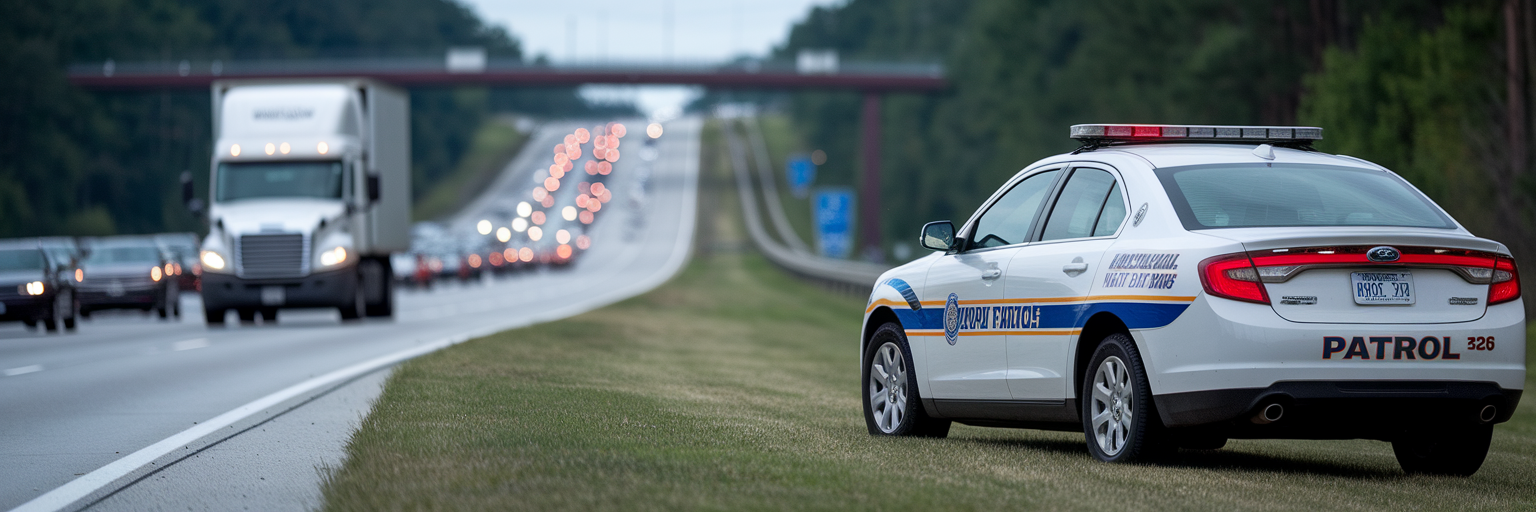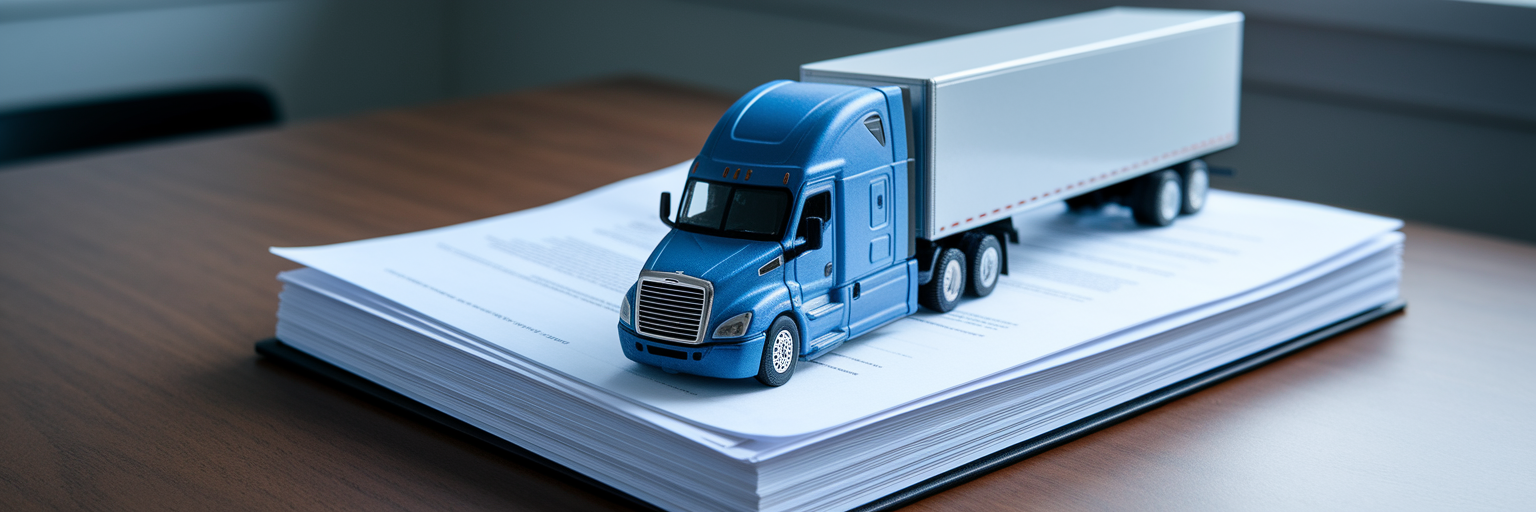Why Charleston’s Interstates Are High-Risk for Truck Collisions
Anyone who regularly drives through Charleston knows the unique pressure of its major arteries. The constant flow of freight from the Port of Charleston mixes with daily commuters and tourists, creating a volatile environment on I-26 and I-526. These aren’t just busy highways; they are logistical choke points where high-speed travel slams into sudden, unpredictable congestion.
Specific interchanges have become notorious hotspots. The areas around Cosgrove Avenue, Leeds Avenue, and Montague Avenue are prime examples. Here, merging traffic, frequent lane changes, and the sheer volume of vehicles create conditions ripe for disaster. An i-26 truck accident charleston drivers witness is often the result of these systemic pressures, not just a single driver’s mistake.
The stop-and-go rhythm forces heavy, fully loaded semi-trucks to brake abruptly, leading to devastating rear-end collisions and jackknife accidents. The factors contributing to an i-526 truck accident are a predictable mix:
- Heavy Port Traffic: A continuous stream of container trucks enters and exits the interstate system, often with drivers on tight schedules.
- Commuter Congestion: Daily drivers heading to and from North Charleston, Mount Pleasant, and West Ashley share the same crowded lanes.
- Complex Merges: On-ramps and off-ramps at major interchanges force vehicles of all sizes into close quarters, demanding split-second decisions.
This combination validates the anxiety many local drivers feel. These routes demand constant vigilance, as the risk of a serious collision is an everyday reality.
Law Enforcement Response and Official Reports
In the chaotic moments after a crash, it can be confusing to know who is in charge. On Charleston’s interstates, jurisdiction is split, and knowing the difference is essential for your next steps. The South Carolina Highway Patrol (SCHP) has primary authority over the main travel lanes of I-26 and I-526. They are typically the agency that investigates the collision and creates the official report.
However, the North Charleston Police Department (NCPD) may also be on the scene, especially if the incident affects connecting ramps, overpasses, or adjacent city streets. Their role might be to manage local traffic or handle aspects of the crash that spill onto city property. The most important thing you can do is identify which agency is taking the lead and get the officer’s name and the report number before you leave the scene. This single piece of information is the key to starting the insurance and legal process.
| Factor | South Carolina Highway Patrol (SCHP) | North Charleston Police Department (NCPD) |
|---|---|---|
| Primary Jurisdiction | Main travel lanes of I-26 and I-526 | Connecting ramps, overpasses, and surface streets within North Charleston city limits |
| Report Type | South Carolina Traffic Collision Report (TR-310) | City of North Charleston Incident Report |
| How to Obtain Report | Online via SCDPS website or in person at local SCHP office | Online via NCPD records portal or in person at the department |
| On-Scene Focus | Major collision investigation, traffic control on the interstate | Supporting role, managing local traffic, incidents on city property |
Critical Evidence to Gather at the Scene
After ensuring everyone is safe and 911 has been called, what you do next can significantly impact your ability to recover damages. The trucking company and its insurer will start their own investigation immediately, so you must act as your own advocate. Think of yourself as a fact-gatherer, preserving a snapshot of the scene before it’s cleared away.
Focus on capturing details that may seem small but can become crucial later. This evidence forms the foundation of a strong case, and understanding the requirements for a successful personal injury claim can provide valuable context for why these steps matter.
- Photograph Everything: Use your phone to take pictures of all vehicles from every angle. Get close-ups of the damage and wider shots that show the positions of the cars on the road.
- Document the Surroundings: Capture images of any skid marks, debris on the pavement, and nearby traffic signs or signals. These details help reconstruct the accident sequence.
- Record a Scene Video: A short video panning across the entire scene can capture the flow of traffic, weather conditions, and the overall environment in a way photos cannot.
- Talk to Witnesses: Get the names and phone numbers of other drivers and, most importantly, any independent eyewitnesses who stopped. Their neutral account is incredibly valuable.
- Identify the Trucking Company: Look for the company name and USDOT number printed on the side of the truck’s cab or trailer. Take a clear photo of it. This number identifies the responsible motor carrier.
Navigating the Complex Layers of Trucking Insurance
A collision with a commercial truck is nothing like a typical car accident. While a car crash usually involves two drivers and their personal insurance policies, a truck accident introduces a web of corporate entities, each with its own insurance and legal team. Answering the question of who is liable in a truck accident is rarely straightforward.
The trucking company’s immediate goal is to minimize its financial exposure. They may try to shift blame to the driver, a parts manufacturer, or even you. You are not just dealing with a driver; you are up against a sophisticated operation. Several layers of insurance and liability could be involved:
- The Truck Driver: The individual operator may have their own liability policy.
- The Motor Carrier: The trucking company that employs the driver carries a high-value primary liability policy, as mandated by federal law.
- The Trailer Owner: Sometimes, the cab and the trailer are owned by different companies, adding another party to the mix.
- The Cargo Owner: The company whose goods are being shipped may also have a vested interest and separate insurance.
Each of these parties has a financial incentive to deny responsibility. Accessing the compensation you deserve requires cutting through these complex corporate structures to hold the right parties accountable.
Protecting Your Rights After a Truck Accident
In the days following a semi truck accident south carolina, the actions you take are just as important as what you did at the scene. The trucking company’s insurance adjuster will likely contact you quickly, often sounding helpful and concerned. It is their job to gain your trust and get you to settle for the lowest amount possible.
To protect yourself, follow these critical steps:
- Seek Medical Attention: Go to a doctor or an urgent care clinic immediately, even if you feel fine. Some serious injuries have delayed symptoms, and this creates an official record of your physical condition.
- Report to Your Insurer: Inform your own insurance company about the accident with the basic facts. However, do not give a recorded statement to any insurer, including your own, without legal advice.
- Do Not Speak to Their Adjuster: You are not obligated to speak with the trucking company’s representatives. Politely decline to answer questions and refer them to your attorney.
Given the complexity of these cases and the aggressive tactics used by commercial insurers, the most important step is to consult with experienced Charleston truck accident lawyers. An attorney can handle all communications, preserve critical evidence, and fight for the fair compensation you need to recover. If you have been injured and need to understand your options, you can reach out to our team for a direct consultation.
Common Questions About I-26 and I-526 Wrecks
Who investigates truck wrecks on I-26?
While the South Carolina Highway Patrol (SCHP) handles the initial on-scene investigation for most crashes, they have a specialized unit for severe incidents. For collisions involving fatalities or catastrophic injuries, SCHP’s Multi-disciplinary Accident Investigation Team (MAIT) often takes over. This team conducts a forensic-level analysis, examining vehicle mechanics, driver logs, and roadway evidence to determine the precise cause of the crash.
Is I-526 a commercial truck route?
Yes, absolutely. The Mark Clark Expressway (I-526) is a designated and vital commercial artery connecting West Ashley, North Charleston, and Mount Pleasant. It provides essential access to the Wando Welch and North Charleston terminals of the Port of Charleston. The high volume of commercial traffic is a recognized factor in the area’s congestion and accident rates. In fact, according to the South Carolina Department of Transportation, the Lowcountry Corridor project is a long-term initiative specifically designed to relieve this congestion and improve safety by redesigning the I-26/I-526 interchange and other critical segments.



